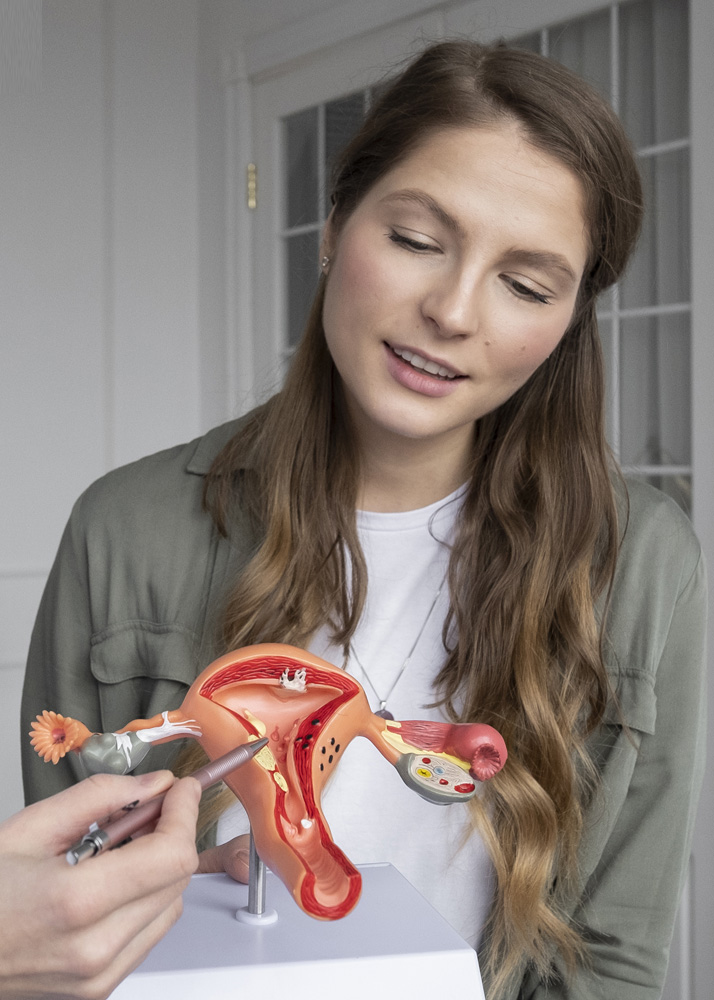PMS (Premenstrual Syndrome)

PMS (Premenstrual Syndrome)
PMS – Premenstrual Syndrome, also known as PMT – Premenstrual Tension, is a group of physical and emotional symptoms many women experience in a week or two before their menstrual period. PMS is very common, and its impact can vary widely. Some women may experience a little breast tenderness, whilst others can feel huge emotional swings and may want to lash out at loved ones. Typically, the symptoms resolve quickly within a few days of menstruation starting.
PMS can be a bumpy ride in our teenage years and also as we approach menopause. When it’s particularly severe, it’s known as Premenstrual Dysphoric Disorder – PMDD, which can affect one in twenty women.
What at the symptoms of PMS?
Every woman experiences PMS differently.
Common symptoms include:
What causes PMS?
The cause of PMS and PMDD isn’t entirely known. Still, we know that fluctuations in the hormones oestrogen and progesterone impact various chemical pathways in the brain and body, altering serotonin, dopamine, noradrenaline and GABA (gamma amino-butyric acid) levels.
Women who have a history of anxiety, depression, SAD (seasonal affective disorder), thyroid disorders and who are overweight are more likely to develop PMDD.
How is PMS diagnosed?
When you come to the clinic, I will listen carefully to your symptoms and how they affect you. Sometimes, I may recommend blood tests to rule out other conditions, but most women with PMS will have a normal hormonal profile on testing.
If you have symptoms that start within at least five days before your period starts, with improvement in the first four days of your period arriving, and it’s impacting your well-being, you likely have PMS.
Occasionally, symptoms can be similar to perimenopausal or early menopausal symptoms, and it is good to get hormonal tests done to exclude this.
Treatment for PMS
PMS is not something you have to suffer on with and there are several positive steps to help yourself, such as:
Consider taking evening primrose oil. Although there have been very few high-quality clinical trials to examine the benefit of evening primrose oil, some women tell me that they do benefit from taking it.
Medications for PMS
Progesterone medication in the second half of the menstrual cycle may be helpful for some women, and some of the newer combined oral contraceptive pills containing drospirenone (e.g. ‘Yasmin’), have been shown to improve PMS symptoms, especially if taken continuously (and without pill-free breaks).
Women who are affected by PMDD may benefit from taking a type of antidepressant known as an SSRI (selective serotonin reuptake inhibitor), as well as support from a psychologist or therapist and cognitive behavioural therapy.
Sometimes, Gonadotrophin hormone analogues (GnRH), which temporarily stop menstrual cycles, may need to be considered if there isn’t sufficient relief from other treatments.
